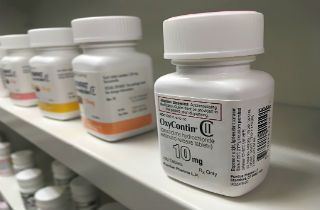OxyContin is considered both a medical and legal narcotic in the U.S. But OxyContin is only legal when you have a prescription and are using it for medical reasons.
In fact, OxyContin is a Schedule II drug as defined by the Controlled Substances Act. Because of OxyContin euphoric effects, potential for abuse, and the danger of physical dependence and risk of overdose, OxyContin is only available under a doctor’s supervision. We’ll talk more about the risks of OxyContin, including its narcotic effects, here. And we invite your questions about OxyContin medical or legal issues at the end.
Legal prescription uses for OxyContin
OxyContin (oxycodone time release) is used to treat moderate to severe pain. Are oxycodone and OxyContin the same? Yes, except for their duration of action. Some formulations of OxyContin are used to treat chronic or continuous pain, rather than on an as-needed basis. OxyContin works by altering the way the brain and nervous system respond to pain, a characteristic that makes OxyContin a narcotic by medical definition.
Is OxyContin legal?
Yes. OxyContin use is legal as classified by the Controlled Substances Act when you take OxyContin as prescribed. OxyContin use and distribution is enforced by the DEA.
Legally, narcotics include opiate medications and a few other numbing or sedative medications, notably marijuana and cocaine. The main ingredient in OxyContin, oxycodone, is an opiate painkiller that has a high potential for abuse and is highly addictive. This is why OxyContin has been classified as a Schedule II narcotic.
Why is OxyContin a Schedule II drug?
Taking OxyContin and other schedule II drugs without a prescription is illegal and could open you up to criminal prosecution. But why is OxyContin considered so threatening? Schedule II drugs like OxyContin are restricted only for specific medical use. Their abuse and addictive potential is well-known. In fact, OxyContin abuse can lead to severe psychological and physical dependence.
OxyContin narcotic abuse
Oxycodone (the main ingredient in OxyContin) can cause a euphoric high, especially when taken in large doses. But OxyContin can abused in a few different ways. OxyContin abuse involves taking larger doses than normally prescribed, or somehow altering the medication to subvert its extended-release features. Sometimes OxyContin is crushed and either snorted, or dissolved in water and injected. Newer versions of the medication are designed to be harder to abuse: in water, it becomes a gummy substance that’s not easily injectable.
Is OxyContin addictive?
Yes. OxyContin is addictive. Using Oxycontin even as prescribed can cause physical dependence, recognized by tolerance and withdrawal. Tolerance to a drug leads a person to take larger doses over time to achieve the same effects. And trying to stop OxyContin or lowering doses abruptly can cause withdrawal symptoms. But if you are seeking an OxyContin high, increased tolerance raises the risk of adverse effects, even overdose. OxyContin addiction is further characterized by drug cravings after withdrawal. Simply put, if you cannot live without OxyContin in spite of negative consequences to your life, you are likely addicted to OxyContin. There are ways to treat OxyContin addiction if you are ready to quit.
Should OxyContin classification change?
OxyContin seems to be classified appropriately. Abuse of the drug has become widespread, and concerns the medical community due to the potential for overdose and death. Because OxyContin can be so dangerous and is so habit-forming, it needs to only be used when necessary.
PROs of Oxycontin Schedule II classification
OxyContin has a few things in its favor. It’s very effective at managing chronic and severe pain, where other painkillers may not be strong enough. Because it’s not combined with other non-narcotic painkillers like acetaminophen or aspirin, it’s possible for those with a tolerance to take larger doses to manage their pain, without risking an overdose from combined medications.
CONs of Oxycontin Schedule II classification
OxyContin can cause negative side effects, which impair the ability of the user to function normally. There’s a risk of overdose, which can cause coma, difficulty breathing, and death. It’s easy to become addicted to the medication, and hard to quit. OxyContin should only be prescribed in situations where the benefits clearly outweigh the risks, but not for managing mild or occasional pain.
OxyContin narcotics questions
Do you have more questions about OxyContin as a narcotic? Are you facing medical or legal consequences of taking OxyContin? Please leave us your questions below. We try our best to answer all questions ASAP, with a personal and prompt response. You are not alone and we are here to help!









Related Posts